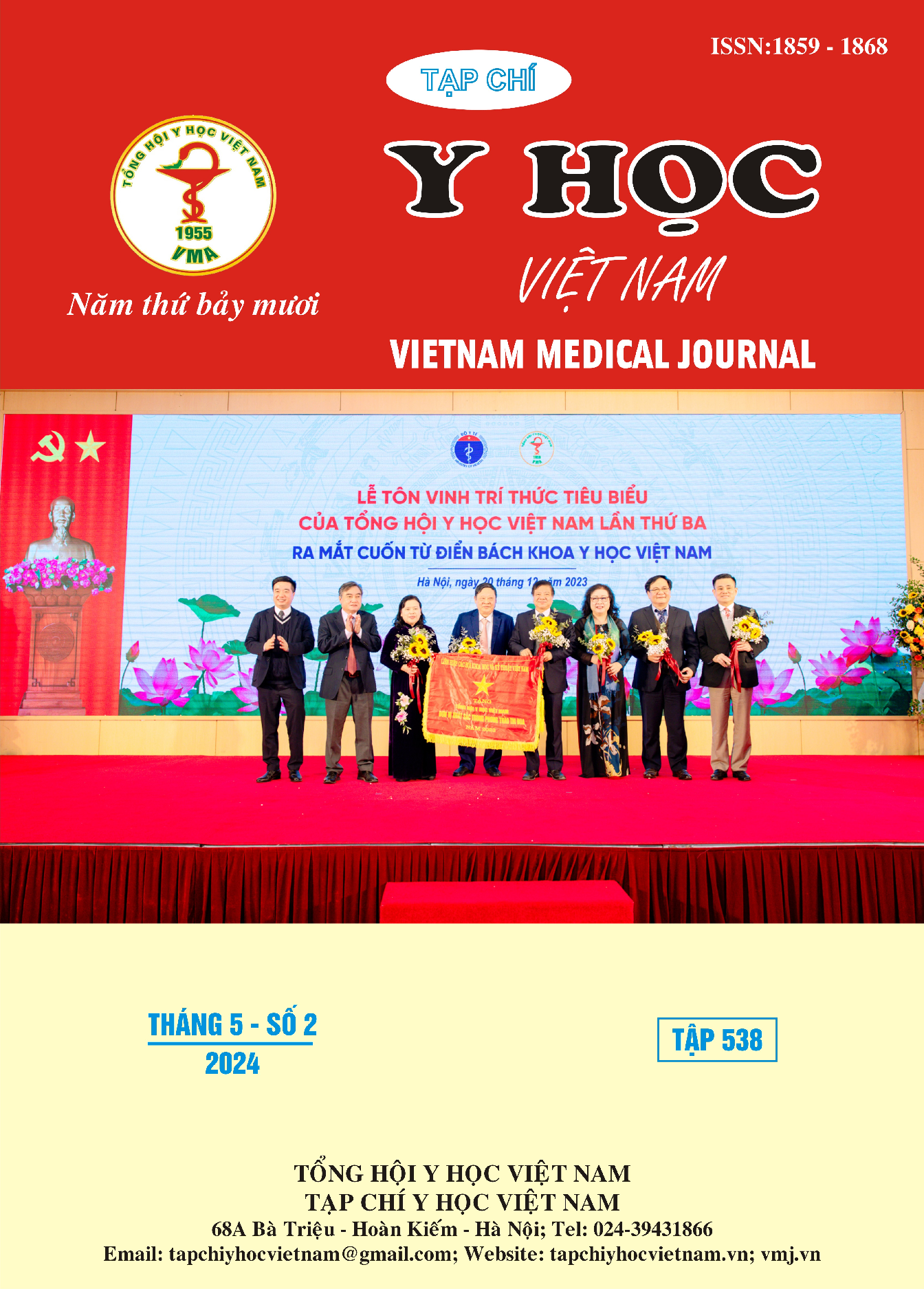CLINICAL AND PARACLINICAL CHARACTERISTICS OF PREGNANT WOMEN DIAGNOSED WITH PLACENTA ACCRETA AT HANOI OBSTETRICS AND GYNECOLOGY HOSPITAL
Main Article Content
Abstract
Objectives: Describe the clinical and paraclinical characteristics of pregnant women diagnosed with placenta accreta treated at Hanoi Obstetrics and Gynecology Hospital. Subjects and methods: Retrospective descriptive study of 76 pregnant women diagnosed with placenta accreta and cesarean section scars treated at Hanoi Obstetrics Hospital. Results: 76 pregnant women participated in the study, the average age of pregnant women was 34.3 years old, history of abortion accounted for 36.8%, history of cesarean section 1 time, 2 times, 3 times accounted for 35.5%, 51.3%, 13.2% respectively. Vaginal bleeding accounted for 36.8%, abdominal pain accounted for 26.3%, both abdominal pain and bleeding accounted for 11.9%; and 48.7% had no symptoms. Anterior placenta account for 94.8%, posterior placenta only accounts for 5.2%. The proportion of pregnant women with central placenta previa, marginal attachment, and low attachment accounted for 81.6%; 7.9%, and 10.5% respectively. Conclusions: Placenta accreta often appears in pregnant women with central placenta previa, attached to the anterior surface, and with a history of multiple cesarean sections.
Article Details
Keywords
Placenta accreta, Placenta praevia
References
2. G. Garmi andR. Salim (2012). Epidemiology, etiology, diagnosis, and management of placenta accreta. Obstet Gynecol Int, 2012, 873929.
3. S. Wu, M. Kocherginsky andJ. U. Hibbard (2005). Abnormal placentation: twenty-year analysis. Am J Obstet Gynecol, 192 (5), 1458-1461.
4. R. Faranesh, S. Romano, E. Shalev et al (2007). Suggested approach for management of placenta percreta invading the urinary bladder. Obstet Gynecol, 110 (2 Pt 2), 512-515.
5. G. M. Mussalli, J. Shah, D. J. Berck et al (2000). Placenta accreta and methotrexate therapy: three case reports. J Perinatol, 20 (5), 331-334.
6. K. E. Fitzpatrick, S. Sellers, P. Spark et al (2012). Incidence and risk factors for placenta accreta/increta/percreta in the UK: a national case-control study. PLoS One, 7 (12), e52893.
7. N. Đ. Hinh (1999). So sánh mổ lấy thai vì RTĐ ở 2 giai đoạn 1989 – 1990 và 1993 – 1994 tại viện BVBMTSS. Tạp chí thông tin y dược, Số đặc biệt chuyên đề Sản phụ khoa, 12/ 1999, 107 – 111.
8. P. T. P. Lan (2007). Biến chứng của rau tiền đạo ở những sản phụ có sẹo mổ tử cung tại Bệnh viện Phụ sản Trung Ương từ tháng 1/2002 – 12/2006, Luận văn tốt nghiệp thạc sỹ y khoa, Trường Đại học Y Hà Nội.
9. N. T. Công (2017). Giá trị của siêu âm trong chẩn đoán rau tiền đạo cài răng lược ở thai phụ có sẹo mổ lấy thai tại Bệnh viện Phụ sản Trung ương, Luận văn Bác sĩ chuyên khoa cấp II, trường Đại học Y Hà Nội.
10. N. A. Quang (2022). Nghiên cứu vai trò của siêu âm Doppler và chụp cộng hưởng từ ở những thai phụ rau cài răng lược rau tiền đạo có sẹo mổ cũ tại Bệnh viện Phụ sản trung ương, Luận văn chuyên khoa cấp II, Đại học Y Hà Nội.


